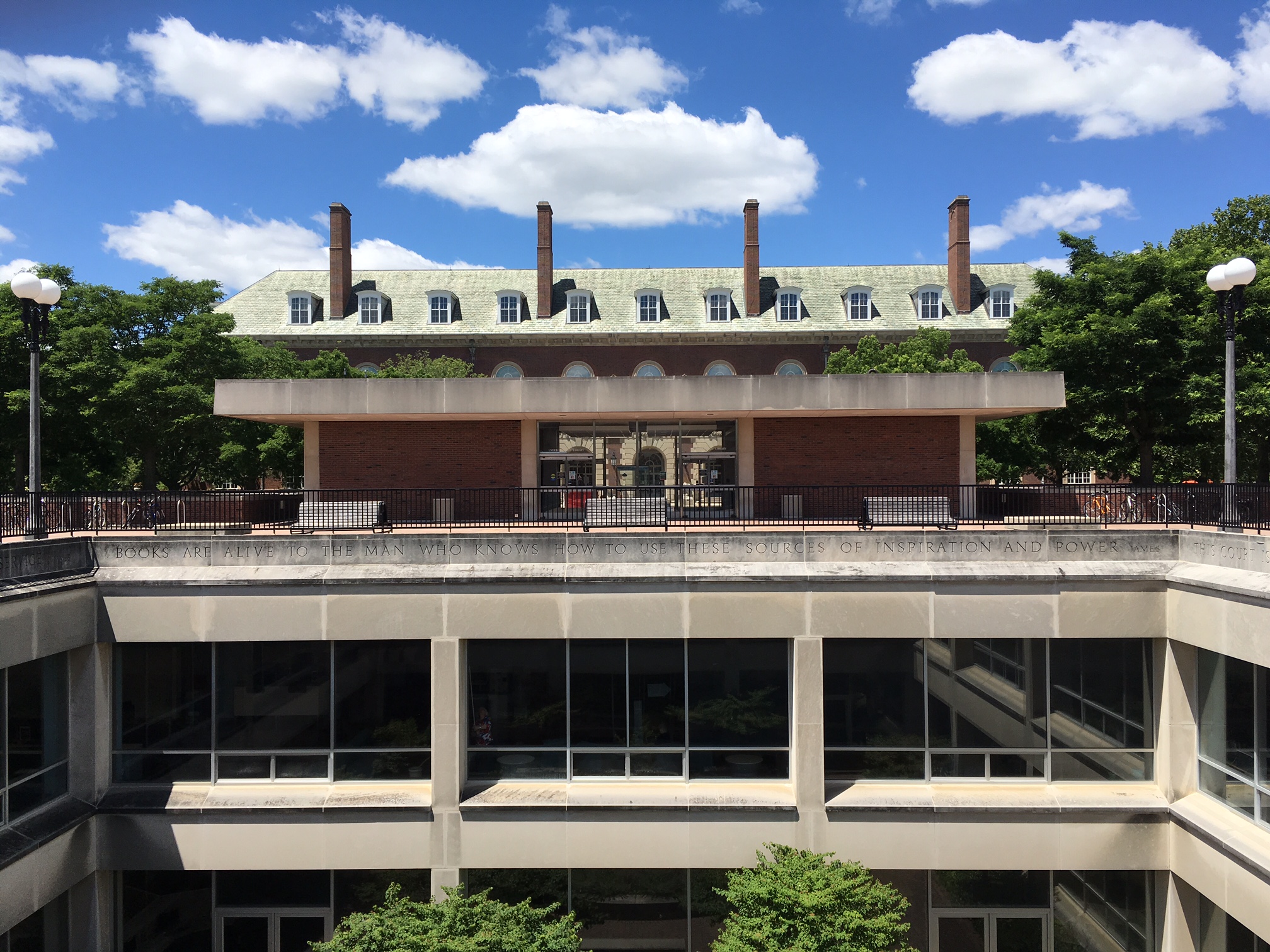Undergraduates on the Move

The promising rethink of the Library of the future will bring Illinois undergraduates back to their roots—positioned invitingly within the Main Library building.
Originally located on that structure’s first floor, the Undergraduate Library found its own home in 1969 when it opened underground right next door. With plans to recommission that space for the University’s rare book and archival collections, undergraduate library services will be integrated into a newly re-envisioned Main Library.
The move brings with it a new set of opportunities. “We go into this with the expectation that we’ll have room to create spaces for undergraduates that are like the spaces in the Undergraduate Library and [with] the next generation of tools and services they’re going to need,” says Dean John Wilkin of the proposal.
That’s because 100,000 square feet will become available when a large section of the stacks are repurposed to provide, in part, areas and services targeted specifically at undergraduates (see Imagine This).
According to Wilkin, the area will house many of the activities now found in the Undergraduate Library, including instructional sessions on library use, as well as the popular Media Commons, where students experiment with emerging technologies and learn how to best use tools for media creation.
But Wilkin points out that the present mode of separating undergraduate services from those available to graduate students and faculty isn’t common on most university campuses and “doesn’t necessarily serve us well.” To remedy that, the proposal relocates undergraduate services to the Main Library, where an exciting opportunity awaits: the chance to work with graduate students and faculty in a newly created research hub. Dedicated to solving societal challenges—from poverty to health to technology—the center will marshal the power of collaborative study. From the start, undergraduates will be invited into this third pillar of interdisciplinary research—akin to the campus’s Beckman Institute for Advanced Science and Technology and the Carl R. Woese Institute for Genomic Biology—albeit with a heretofore unavailable liberal-arts focus.
“We’re not going to dispense with what we’ve been doing in the Undergraduate Library,” Wilkin says. ”There’ll be fun things for the students to do in this space; there’ll be areas where they can come together.” He envisions, however, that opportunities will abound, not unlike the current SourceLab, where undergraduates can learn the craft of historical research through working with online documents and receive “a hands-on experience as undergraduates of what it means to be an historian.”
The proposal resonates with Doug Fitzgerald, who earned a marketing degree in 1976 and now serves on the Library Board of Advocates. “The Undergrad Library has always been special in our U of I family’s memories of life on campus,” he says. “Any plan involving changing it would have to be great. This vision for creating an entirely new environment out of the outdated stacks and bringing the special collections together is right on target.”
Library Friend and fellow board advocate Jim Fessler agrees. “The idea of offering undergraduates the opportunity to be integrated into multidisciplinary research done by graduate students and faculty is one I wish had been around when I was an undergrad,” says Fessler, who received an MBA from the University of Illinois at Chicago in 2015. “This can only elevate the quality of undergraduate education and research at Illinois.”
“We can’t wait to see it completed,” Fitzgerald adds, “and will be delighted that the next generation of students will be able to take full advantage of this superb resource.”
Looking to avoid a “monochromatic” student experience, Wilkin favors instead one that comprises varying shades of depth and complexity. He thinks that will happen with this new arrangement that better marries form with function. From technology experimentation in the Media Commons to high-level research interactions with faculty members “there’ll be this whole continuum of spaces,” he says, to enhance and enrich the learning environment.
Do you have a story you'd like added to the Library News & Events? If so, please let us know:
Submit a Story
